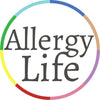Hypersensitivity type may be- Type I Allergy
Immune reactions may be from- IgE
Reactions may occur in- Minutes
Dust Mites are durable, microscopic, hungry and most commonly live in the dust indoors, especially in our homes.
Feeding on the skin cells people shed, they live in beds, furniture, couches, carpet and in any conditions (average in 20 to 25 degrees celsius and 70 - 80% humidity) where they can thrive. They can live all year long in warm, humid places.
Dust Mites aren't insects and have eight legs (they are arthropods and related to spiders). Both their body parts and waste are what cause allergic reactions for people with a Dust Mite allergy.
They also aren't usually airborne and only become airborne during dust raising activities such as house cleaning.
They can be a common all year round leading to allergic reactions and asthma.
Dust Mites aren't just found in homes. Offices, garages, cars, restaurants, holiday cabins, etc are just of the many place where dust can be found which may contain Dust Mites.

SYMPTOMS
Some of the symptoms may be characterised by:
- Congestion
- Cough
- In a child, frequent upward rubbing of the nose
- Itchy nose, mouth or throat
- Itchy skin
- Itchy, watery, or red eyes
- Nasal congestion
- Post Nasal drip
- Runny nose
- Scratchy throat
- Sinus pressure (may cause facial pain)
- Sneezing
- Stuffy nose
- Swollen, blue-colored skin under your eyes
- Hay Fever
- Asthma aggravation
- ANAPHALAXIS
The validity and severity of these symptoms are dependent on the individual and the level of exposure, as determined by a qualified health care provider.
TREATMENT
If you experience or are in the presence of someone that encounters an immediate serious reaction (this may include difficulty breathing, wheezing, throat tightening, swelling, collapse, etc), call or have someone call triple zero (000) immediately.
In the case of a minor allergic reaction, people may use Antihistamines, Decongestants, along with other medications based on their individual symptoms and prescribed treatments.
For severe allergic reactions Epinephrine may be used, followed by seeking emergency medical attention. However, some people may not be able to use Epinephrine due to particular reasons.
It’s important for anyone with an Allergy, to discuss treatments with a qualified health care provider to understand how to manage individual allergies and also to set up an Allergy Action Plan in the case of a reaction.
Always present your Allergy Card, Medical Alert Bracelet or Necklace to ensure health care providers, family members, friends, colleagues and others are aware of your Allergy or Allergies.
TESTING
A skin prick test or a specific IgE blood test may be used to test for a Dust Mite Allergy.
LABELLING
Some labels or terms you may come across on Dust Mite Allergy friendly products:
"Dust Free" "Anti Dustmite"



RANDOM DUST MITE FACT
Dust Mites can't drink or urinate, but they require water which they absorb from moist environments through glands on their front legs.
The information provided on Allergy Life Australia is to generally educate and inform you about living with allergies, intolerances and conditions, and is not intended as medical instruction or as a substitute for diagnosis, examination and advice by a qualified health care provider.
---
ARE THERE ANY OTHER PLACES YOU HAVE COME ACROSS WITH DUST? HAVE YOU HAD AN EXPERIENCE WITH A DUST MITE ALLERGY OR KNOW SOMEONE THAT HAS? LET US KNOW IN THE COMMENTS BELOW




